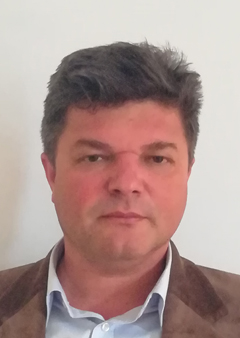Mr. Dmytro Kharchenko

Title of the Report: An implementation of multiscale modeling approach to study radiation effects in cladding materials
Abstract:The multi-scale modeling approach is developed to study irradiation effects in cladding materials and implemented in joint research program of collaboration between NPIC and IAP NAS of Ukraine. The simulation procedure is organized in a way to conduct self-consistent simulations with data transferring from lower (atomistic) to upper (mesoscopic) levels of description. First-principles calculations are used to study structural and energetic properties of Zirconium-based alloys, obtaining elastic constants, most favorable locations of alloying elements and point defects, and stability of secondary phases in Zirconium-based alloys. Algorithms of molecular dynamic simulations are exploited to study development of cascades of atomic displacements, formation of point defect clusters, and an interaction of point defects with dislocations and grain boundaries at elevated temperature. Microscopic data (number of Frenkel pairs, cascade collapse efficiencies, efficiencies of cluster formation, interaction of point defects with dislocation loops and clusters) are used at combined usage of phase field and rate theories to study formation of secondary phases (at the stage of the sample preparation), dissolution of precipitates, defect structure evolution and microstructure transformations under neutron irradiation at diffusion time and length scales. This approach is developed to study a change of mechanical properties of virtually irradiated samples at different kinds of mechanical loads.

